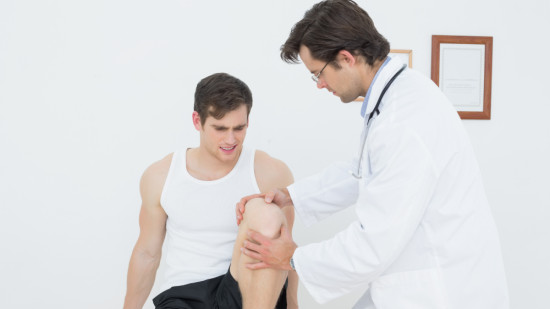Knee injuries are one of the most common injuries for active people. It is usually caused by a one-time acute injury to the knee, or from repetitive use and age. Luckily, there are several things you can do to prevent knee injuries, and if you do hurt your knee, you won’t be relegated to sitting on the sidelines. There are modifications you can do to keep a healthy, active lifestyle.
Strength Training
One of the best things you can do to prevent knee injuries is to strengthen the muscles around your knees. These include your quadriceps, hamstrings, glutes, and even your calf muscles.

All of these muscle groups work together to support the knee joint and ensure proper movement and injury protection. Step-ups are a great exercise for strengthening most of the leg muscle groups. This tutorial shows examples of how to do step ups no matter your fitness level. A good exercise to strengthen hamstrings is the hamstring-curl with a stability ball. This exercise may look difficult at first, especially if you have never used a stability ball during your workouts, but the trick is to go slow, and to not let your hips drop or thrust towards the ceiling. The stronger the muscles are that surround the knee joint, the less likely you will have an injury.

Low Impact Cardio
Low impact cardio exercise is good to prevent wear and tear on your knees and for doing if you are coming back from a knee injury. Swimming and walking are some of the best low impact cardio exercises out there.
If you exercise at a gym, try using the rowing machine or stationary bike. Avoid high impact exercises like running. If you are a runner and want to avoid knee injuries, avoid running downhill and replace your running shoes every 300-500 miles or every three months. This will ensure that you are getting the right support, which goes hand in hand with protecting your knees.
What to Do if You Injure Your Knee
There are several ways you can injure your knee. It might be a sprain, tear, or could even be a fracture. If one area aches, but there is no swelling and your knee is stable, you might just have a sprain.

If your knee feels unstable, it might be a torn ligament. Ligaments stabilize the bone-to-bone connection. If your knee locks up, you could have a torn meniscus. The meniscus is the cartilage that cushions the area between your upper and lower leg bones. If the knee area has a lot of swelling that happens suddenly, you feel a lot of pain with weight bearing, or the bone or joint looks distorted, you may have a fracture, tear, or dislocation. You should seek medical attention immediately if you can. If you can’t get to a doctor immediately, use RICE therapy until you are able to be evaluated by a medical professional. Remember, when applying ice or a cold pack, put a towel or piece of fabric between the ice and your skin so you don’t get frostbite.
Knee injuries are very painful and if they are serious, it can take several weeks to recover. It’s easy to abuse our knees, but try to take care of them so you can stay active and healthy.
If you do sustain a knee injury, come to your nearest Neighbors Emergency Center for treatment. We are open 24/7, 365 days a year, and our board certified emergency physicians are experienced in treating sports injuries. We have on-site imaging facilities, so we can conduct X-rays, CT scans, and Ultrasound in our ER and get your results and diagnosis quicker than a hospital.

